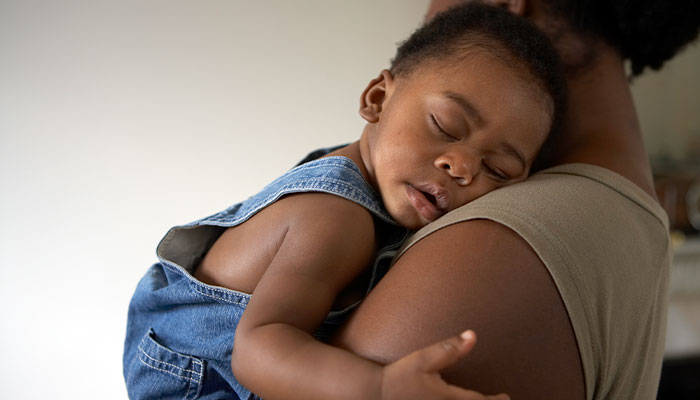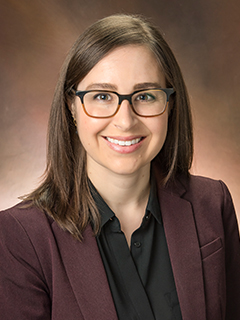HOW CAN WE HELP YOU? Call 1-800-TRY-CHOP
In This Section
Researchers Study Co-occurring Sleep Disorders, Racial Disparities, and Environment

CHOP researchers are studying racial disparities in children with co-occurring sleep disorders.
Sleep deficiencies, including sleep-disordered breathing and insufficient sleep, often co-occur in young children. Both disorders are known to negatively affect neurobehavioral and social-emotional development in children, and disproportionately affect children of racially and ethnically minoritized backgrounds.
We know that these disparities are not because of genetic or biological factors. What we don’t know is what social and environmental factors might lead to or prevent disparities in co-occurring sleep-disordered breathing and insufficient sleep, and the developmental effects of these co-occurring conditions. With grant support from the National Institutes of Health, researchers at Children’s Hospital of Philadelphia are studying this topic, with the goal of developing multi-level interventions to reduce racial sleep health disparities in children.

Ariel Williamson, PhD
“My hope is that the results from this study will help inform tailored and equitable interventions for families and pediatricians,” said Ariel Williamson, PhD, psychologist in the Department of Child and Adolescent Psychiatry and Behavioral Sciences at CHOP. “We want more information about what works and what could help, so we have a greater menu of options. But we also need to emphasize how much sleep matters for development. It is often overlooked because there are many things to address in a child’s life.”
Insufficient sleep and sleep-disordered breathing both affect the frontal lobes, which are responsible for executive function. Early childhood is an important period of development, especially for executive functioning. In a previous study, Dr. Williamson compared preschoolers with insufficient sleep only or sleep-disordered breathing only to children with co-occurring sleep problems. Children with co-occurring sleep problems had worse parent-rated executive functioning skills and attention problems.
The first objective of the new grant is to use multiple methods, such as parent-rated questionnaires and child-completed learning tasks, to understand the effects of co-occurring sleep problems on preschool children’s neurobehavioral and social-emotional functioning. The second objective is to identify modifiable socio-ecological factors that contribute to sleep-related racial disparities between Black and white children. The research team is focusing on socio-ecological factors that are both proximal — within the home — and distal — such as neighborhood environment — that could be linked to the disparities.
“Co-occurrence of insufficient sleep and sleep-disordered breathing has not been studied in children before, and we don’t know if there are disparities in their co-occurrence, and if the conditions could have synergistic adverse consequences on neurobehavior,” Dr. Williamson said.
The study team aims to recruit four groups of children with 100 in each group: healthy controls; children with insufficient sleep only; children with sleep-disordered breathing only; and children with both conditions. To look at racial disparities, each group is expected to consist of 50 Black children and 50 white children.
Children ages 3 to 5 years will participate in parent-child interaction tasks for researchers to observe the children’s behavior. Parents as well as preschool teachers will complete questionnaires on child behavior and on racial bias and discrimination. The researchers will give children’s families an actigraphy watch to track their sleep for seven to 10 nights and keep sleep diaries. After this, they will do an overnight sleep study to confirm whether the participating child has sleep disordered breathing. The researchers will perform qualitative interviews with a smaller sample of the parents from the study groups to learn more about the potential barriers and facilitators to healthy sleep practices.
Children also will provide blood and saliva samples. The researchers will measure blood toxin levels, in addition to neighborhood toxin levels. They want to determine if environmental factors contribute to sleep-disordered breathing and its developmental impacts, particularly in low-income neighborhoods where toxins are often prevalent. Dr. Williamson and the research team hope that their findings will help inform sleep health interventions at multiple levels, including policy reform to improve environmental conditions for children and families.